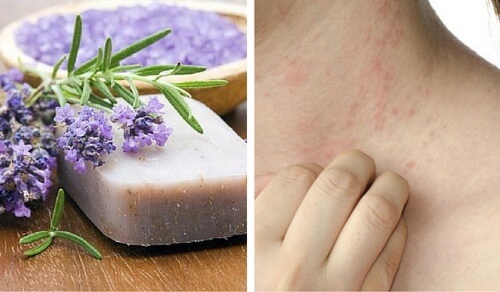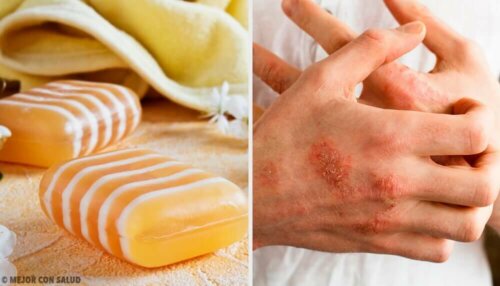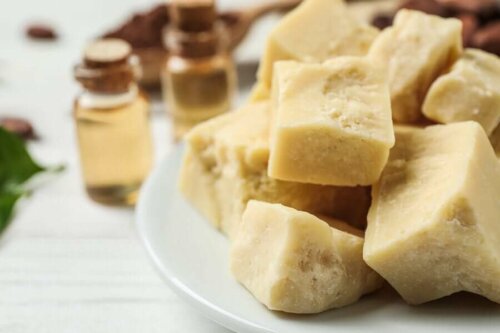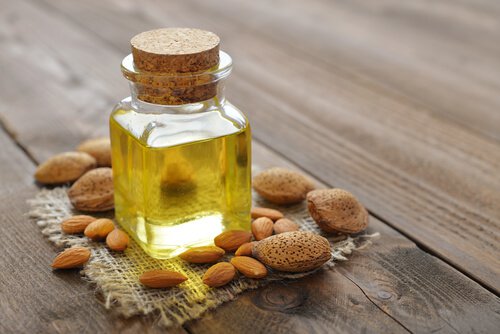Natural Homemade Soap for Sensitive Skin

Today’s article brings you a recipe for a homemade soap that’s great for sensitive skin and can counteract dermatitis. It’ll help moisturize your skin in order to keep this condition from getting worse. You may not know it but people with sensitive skin or dermatitis need to use natural skin care products as much as they can.
Commercial soaps aren’t harmful, it’s only that they often contain substances that are fine for normal skin but too aggressive for sensitive types.
Today’s article will show you how to prepare a simple homemade soap using natural ingredients that have soothing, balancing, and moisturizing properties. Besides, it’s very easy to make. So, are you up for it? Keep on reading.
How to treat sensitive skin or dermatitis
You need to be very picky when it comes to cosmetic and skincare products that you apply to sensitive skin or skin with dermatitis because they can react to a lot of ingredients.
In addition, it’s important to note that there are several types of dermatitis, each with its own specific causes and treatments. The term “dermatitis” is simply a generic term referring to skin irritation.
However, whatever your type of dermatitis or if you have sensitive skin, it’s always recommended to keep it moisturized. That’s why today we’re going to present this soap that could help you.
Ingredients for a bar of homemade soap to treat sensitive skin

Glycerin
This plant-based compound is widely used in all types of cosmetic products. Thus, it’s perfect for homemade soaps to treat sensitive skin.
According to a study published in the British Journal of Dermatology, glycerin or glycerol hydrates your skin. In addition, it also improves the skin’s elasticity and protects it from external threats.
In this way, it can help moisturize sensitive skin and dermatitis, and improve its condition. We recommend buying pure, solid glycerin or a bar of unscented glycerin soap.
We think you may also like to read this article: Five Amazing Tips for a Wonderful Skin
Cocoa butter

Cocoa butter is an ingredient that’s very rich in oils and therefore very nutritious. In this way, it’ll also provide extra hydration to the skin. It also has the advantage of helping your homemade soap solidify.
Lavender essential oil
This oil has been used in skincare products for a long time. Not only for its scent but also for its moisturizing properties that help nourish the skin.
In addition, according to a study published in the journal Complementary Therapies in Clinical Practice, it prevents scarring by contributing to collagen synthesis.
Therefore, combined with the rest of the ingredients, it can help keep your skin firm as well as moisturized. This makes it an essential ingredient in this homemade soap for delicate skin.
Like this article? You may also like to read: Mandelic Acid: What Is It and What Are its Benefits for the Skin?
Almond oil

Cold-pressed almond oil is a very nourishing oil, providing softness and hydration. Several studies have analyzed essential oils, including almond oil.
The conclusion is that they have emollient properties, which help to moisturize and soothe the skin. In addition, they also have a certain photoprotective effect against sunlight.
In this way, this cream won’t just help you take care of your sensitive skin, but will also offer extra protection against UV rays. By this, we don’t mean it should replace sunscreen, but it can be an added help.
White, red, or pink clay
These three clay powders are the best options for sensitive skin and dermatitis. In fact, this substance has long been used in dermatological products.
This isn’t exactly because of its direct benefits on the skin, but because it enhances the effects of creams and lotions. How? Research shows that clay contributes to stabilizing the mixtures of creams and lotions, favoring their absorption.
In other words, the clay will allow all the ingredients to mix and solidify properly, which will allow the absorption of its properties through the skin.
How to make this soap for sensitive skin
To make this handmade soap for delicate skin and dermatitis you’ll need the following ingredients:
- 1 tablet of glycerin
- 15 drops of lavender essential oil
- 4 tbsp. of cocoa butter
- 2 tbsp. of almond oil
- 2 heaping tbsp. of white, pink, or red clay powder
Put the glycerin and cocoa butter in a double boiler until they melt.
When they have a more or less liquid consistency, turn down the heat to warm and add the almond oil and powdered clay.
Mix well, remove from heat, and add the lavender essential oil. Pour this mixture into a mold that you use for soap. Once this mixture has cooled, your soap will be ready!
How to use this soap for sensitive skin
Finally, we recommend you apply this handmade soap for sensitive skin and dermatitis every day to keep your skin moisturized. Although it’s a natural soap, we recommend that if you have sensitive skin, always apply it carefully and gently, to prevent excessive friction from damaging your skin.
You can use it in the shower and even daily to wash your hands and offer them extra protection. This part of the body is one of the most exposed to external agents. Therefore, it’s important to pay special attention to it.
Before leaving you, here’s one last piece of advice. If you have dermatitis, see a dermatologist. Moisturizing and skincare are beneficial, but it isn’t a treatment for this condition. If you want to get rid of the problem at its root, you’ll need specialized treatment.
All in all, this soap can be a great complement, especially if you have delicate skin. As you’ve seen, it’ll help you take care of your skin and avoid irritations, dryness, or wounds, try it and start reaping its benefits!
All cited sources were thoroughly reviewed by our team to ensure their quality, reliability, currency, and validity. The bibliography of this article was considered reliable and of academic or scientific accuracy.
- Fluhr, J. W., Darlenski, R., & Surber, C. J. B. J. (2008). Glycerol and the skin: holistic approach to its origin and functions. British Journal of Dermatology, 159(1), 23-34. Available at: https://doi.org/10.1111/j.1365-2133.2008.08643.x. Accessed 16/04/2020.
- Gasser, P., Lati, E., Peno‐Mazzarino, L., Bouzoud, D., Allegaert, L., & Bernaert, H. (2008). Cocoa polyphenols and their influence on parameters involved in ex vivo skin restructuring. International journal of cosmetic science, 30(5), 339-345. Available at: https://doi.org/10.1111/j.1468-2494.2008.00457.x. Accessed 16/04/2020.
- Mayo Clinic (2019). Dermatitis. Available at: https://www.mayoclinic.org/es-es/diseases-conditions/dermatitis-eczema/symptoms-causes/syc-20352380. Accessed 16/04/2020.
- Moraes, J. D. D., Bertolino, S. R. A., Cuffini, S. L., Ducart, D. F., Bretzke, P. E., & Leonardi, G. R. (2017). Clay minerals: properties and applications to dermocosmetic products and perspectives of natural raw materials for therapeutic purposes—a review. International journal of pharmaceutics, 534(1-2), 213-219. Available at: https://doi.org/10.1016/j.ijpharm.2017.10.031. Accessed 16/04/2020.
- Rawlings, A. V., & Lombard, K. J. (2012). A review on the extensive skin benefits of mineral oil. International journal of cosmetic science, 34(6), 511-518. Available at: https://doi.org/10.1111/j.1468-2494.2012.00752.x. Accessed 16/04/2020.
- Vakilian, K., Atarha, M., Bekhradi, R., & Chaman, R. (2011). Healing advantages of lavender essential oil during episiotomy recovery: a clinical trial. Complementary therapies in clinical practice, 17(1), 50-53. Available at: https://doi.org/10.1016/j.ctcp.2010.05.006. Accessed 16/04/2020.
This text is provided for informational purposes only and does not replace consultation with a professional. If in doubt, consult your specialist.








